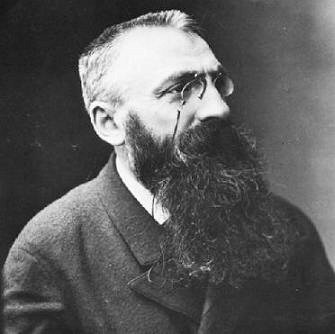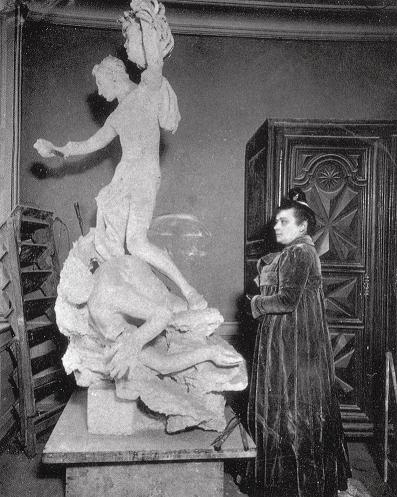|
(For Carolyn)
Camille Claudel (1864-1943)
(about 1884)
"A revolt against nature: a woman genius".
LIFE The French sculptor Camille Claudel was the muse, pupil, and lover of Auguste Rodin, as well as a major artist in her own right. She is perhaps better known for her tempestuous relationship with Rodin than for her moving works of art, many of which can be found at the Musée Rodin and Musée d'Orsay in Paris. It would be a mistake to assume that Claudel's reputation has survived simply because of her notorious association with Rodin. She was in fact a brilliant sculptor in her own right.
(Auguste Rodin)
She never lived with Rodin, who was reluctant to end his 20-year relationship with Rose Beuret. Although pregnant, Claudel never had children with Rodin; she lost the child in an accident, which sent her into a deep depression. Knowledge of the affair agitated her family, especially her mother, who never completely agreed with Claudel's involvement in the arts. As a consequence, she left the family house. In 1892, perhaps after an unwanted abortion, Claudel ended the intimate aspect of her relationship with Rodin, although they saw one another regularly until 1898.
(At work in Rodin's studio)
After their physical relationship
ended, their mutual obsession for each other remained. Rodin continued his
rise to glory. The critical response for the exhibition of his work
at the Pavillon de l’Alma in 1900 confirmed him as “the most
famous artist in the world.” Honoured on many occasions, he was
surrounded by a huge circle of friends and acquaintances.
(Camille in her own studio in Paris)
As she grew increasingly reclusive and paranoid, her family (at the instigation of her brother Paul, a poet and diplomat) committed her to an insane asylum in 1913 where she remained for the last 30 years of her life, without a visit from her mother or sister. Paul, though living abroad, was the only family member who visited her sometimes. In 1915 Camille demands her family, especially her mother, to be released or transferred to a hospital in Paris. But instead, her mother forbids Camille any contact besides her brother and herself. Whether or not Claudel was
truly insane and needed to stay in an asylum remains unclear. She
wrote lucid letters to her family and friends, and even her
doctors recommended that she be released on at least two
occasions. But her brother was often abroad, and her mother would
not allow her release, (..."je ne "I live in a world that is so curious, so strange," Claudel wrote in a letter to a friend in 1935. "Of the dream which was my life, this is the nightmare." She died eight years later, on October 19, 1943 in Montdevergues, France.
(Camille about 1935)
Camille Claudel needs to be recognized for her own work, her innovative vision and the power of her sculptures. It is also important to view her genius as detached from Rodin's as possible, to only remember her original and passionate wroks of art. (See next page for Camille's works)
Source: Wikipedia, BookRags.com
MP3: Clair de Lune, Claude Debussy (see
text "La Valse" enlarged, next page)
For Camille's complete biography |




